Types of Acne Scarring
Acne scarring can be a distressing condition, leaving lasting marks on the skin. At Solihull Medical Cosmetic Clinic, we understand the impact these scars can have on self-esteem and confidence. Our expert team specialises in advanced treatments to address the various types of acne scarring, restoring a smoother, more even complexion.
1. Rolling Scar
These are distensible, depressed scars with gently sloping edges. The rolling scar is a shallow depressions that is best appreciated with a change in surface lighting. They can vary in size and often coalesce with neighbouring rolling scars. Rolling scars are shallow, wide (more than 4 to 5 mm) and have a subdermal fibrous tether. These scars are caused by damage under the surface of the skin. They give the skin a wave-like appearance.
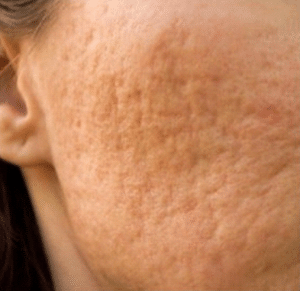
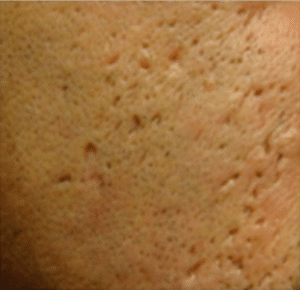
2. Ice Pick scar
Ice pick scars are narrow (less than 2 mm), deep, sharply marinated epithelial tracts that extend vertically to the deep dermis or subcutaneous tissue. The skin looks as if it has been pierced by an ice pick or sharp instrument. Ice picks scars seem to make a small, deep, "hole" in the skin. They are the most common acne scars that occur on the cheeks and have a "punctate" appearance. Ice pick scars develop after an infection from a cyst or other deep inflamed skin tissue and its way to the surface, leaving a long column-like.
3. Box Scar
Boxcar scars are angular scars with sharp vertical edges and resemble the scars left by chickenpox. They may be shallow or deep, punched out, wide at the surface and at the base, and are most often found on the cheeks and temples.
These are distensible, depressed scars with gently sloping edges. The rolling scar is a shallow depressions that is best appreciated with a change in surface lighting. They can vary in size and often coalesce with neighbouring rolling scars. Rolling scars are shallow, wide (more than 4 to 5 mm) and have a subdermal fibrous tether. These scars are caused by damage under the surface of the skin. They give the skin a wave-like appearance.
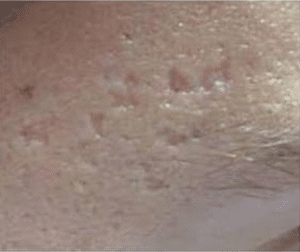
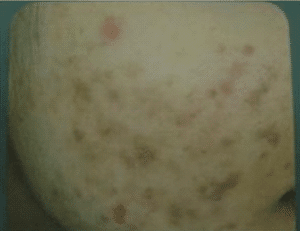
4. Post Inflammatory pigmentation scarring (common in Asian and dark skin)
Post-inflammatory hyperpigmentation, or PIH, is the medical term used to describe discolouration of the skin that follows an inflammatory wound. It is the skin's natural response to inflammation.
PIH usually looks like a flat area of discolouration on the skin. It can range in colour from white, and pink to red, purple, brown, or black, depending on your skin tone and depth of the discolouration.
PIH develops when a wound or irritation, like a scrape, rash, or pimple, causes the skin to become inflamed. As the skin heals, it produces too much melanin. Melanin is the protein in the skin that gives the skin its colour. It's the excess melanin that darkens and discolours the skin.1 This discolouration remains even after the wound has completely healed.
It can develop in all skin types, but it tends to be more severe and longer lasting for people with medium to dark complexions.
5. Post Inflammatory Hypopigmentation – white marks at the site of a healed acne scar
In darker skin individuals, once, acne has healed, there can be a loss of pigment in the surrounding skin area. This is called hypopigmentation.
These are distensible, depressed scars with gently sloping edges. The rolling scar is a shallow depressions that is best appreciated with a change in surface lighting. They can vary in size and often coalesce with neighbouring rolling scars. Rolling scars are shallow, wide (more than 4 to 5 mm) and have a subdermal fibrous tether. These scars are caused by damage under the surface of the skin. They give the skin a wave-like appearance.
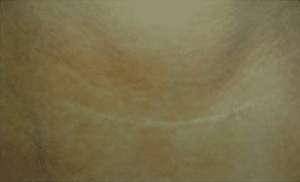
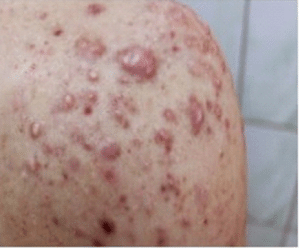
Keloids are a type of raised scar. They occur when the skin has healed after an injury. They can grow to be much larger than the original injury that caused the scar. Anything that can cause a scar can cause a keloid. This includes being burned, cut, or having severe cystic acne. During the initial consultation, Dr. Sagoo shall assess the types of scars. Any underlying acne must be treated and stable first before the scarring is addressed. In general, acne scars will not disappear. Appearance will improve by 50-70% following fully ablative combined laser resurfacing and improve further with other scarring techniques Dr. Sagoo uses.
Book Your Acne Scarring Treatment Appointment
The type of acne scarring you have will determine the most effective treatment plan. Dr. Sagoo will carefully assess your skin during a consultation and recommend the most suitable approach. While complete elimination of acne scars may not be possible, significant improvement can be achieved through our tailored treatments.
Rediscover your skin’s potential with Solihull Medical Cosmetic Clinic.
*Disclaimer: Individual results may vary.
